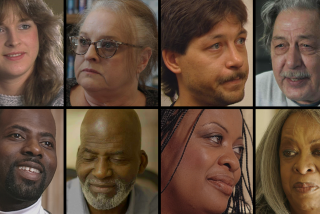PERSPECTIVE ON FAMILIES AND POVERTY : There’s No Mystery to Success : One of the biggest barriers to social programs that work is the inertia of our bureaucracies.
- Share via
The children and families now stuck in poverty must be reconnected with mainstream America. How can we do it?
The answer comes in two parts. One is to make sure that young families have the economic resources to live at a reasonable level of decency. The second, perhaps harder, part involves restructuring institutions so that they will not simply follow outmoded professional and bureaucratic imperatives but will meet the real health, education and social-service needs of today’s disadvantaged children and their families.
There is a wealth of data showing that the single most powerful social risk factor is childhood poverty. High rates of school failure, teen-age pregnancy, drug abuse, violent crime and long-term welfare dependence will come down in response to direct steps to raise incomes among families with children. Measures to ensure that people who work full-time can earn enough to support their families should head the list.
But jobs and income, though necessary, are not sufficient for about one-quarter of the poor--families whose children are growing up in the most destructive conditions. For them, economic supports must be supplemented by high-quality schooling, comprehensive health services and help for the families to nurture, protect and guide their children.
Economic strategies, such as expanded tax credits, assured child support and expanded job opportunities are recognized as central to the policy debate. But less is understood about how much more could be accomplished by economic supports coupled with reformed services.
The health, education and social services being offered to families in need today are in bad repute in part because many are ineffective. They are ineffective because they are fragmented, diluted, depersonalized, overwhelmed and underfunded. But effective services do exist. They have enabled families to function, prepared children to flourish in school, reduced the rate of low-birth-weight babies and teen-age pregnancies and given youngsters reasons to believe in a future worth sacrificing for.
Most successful programs have these characteristics in common:
-- A preventive orientation, aimed at changing long-term outcomes;
-- A focus that embraces the whole family and is shaped by the surrounding community;
-- An atmosphere of trust, respect and collaboration, to strengthen family and community bonds, encouraging family and neighborhood empowerment rather than fostering dependence;
-- A collection of services that are comprehensive, intensive and flexible enough to meet the distinctive and multiple needs of those being served.
-- Adaptation of the program to the needs of participating children and families rather than the requirements of distant bureaucracies.
Examples of successful programs are plentiful, but most operate at the margins of large public systems; they are often conceived and nurtured by extraordinary individuals.
Yes, it is difficult to incorporate into existing public systems the user-friendliness, the comprehensiveness, and family and neighborhood focus that make these trail-blazing ventures successful. And because successful programs are so different from one community to another, they cannot be mass-produced. But the circumstances that allow them to thrive and reach much larger numbers can be.
The most difficult barrier may be the powerful forces of bureaucratic inertia. But to meet the needs of those not adept at manipulating the system, the system must change. Bureaucracies, in short, will have to function less bureaucratically.
This reform agenda should have broad appeal. Conservatives should welcome an agenda founded on concepts of work, family, neighborhood and self-reliance. Liberals should rejoice to see government reinvigorated as an effective ally of the disadvantaged, applying existing knowledge to improve outcomes before American society plunges more deeply into social disorder.
But political leaders will have to endure the discomfort of educating voters to some realities that political rhetoric usually ignores:
First, an effective strategy does require large amounts of money--but less than paying for the consequences of failure. Giving alienated young people a stake in America will contribute more to America’s security than investment in weapons of destruction.
Second, there is no quick fix. Policy-makers, like adolescents, must learn to defer gratification. The nation must take a longer view than the President’s Domestic Policy Council did last year. At that time, it considered an Administration task-force proposal for a major new investment in children that “would have a big payoff in the long run.” It was rejected because it was “not likely to show an immediate reward.”


